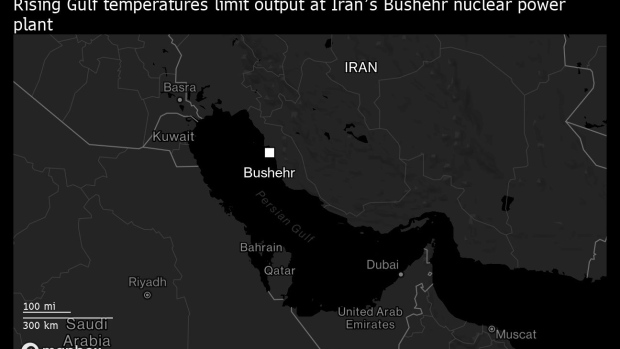Aug 31, 2022
Iran’s Nuclear Program Hits New Snag on Climate Challenge
, Bloomberg News

(Bloomberg) --
Unprecedented high seawater temperatures are limiting Iran’s nuclear-power production, as the warming climate creates new challenges for the country’s atomic program that’s also at the center of tense negotiations with world powers.
Sea temperatures in the Persian Gulf exceeded 34-35 degrees Celsius this summer, Atomic Energy Organization chief Mohammad Eslami told the semi-official Iranian Students’ News Agency in an interview. The average annual temperature is around 26 degrees.
Water is used to cool nuclear reactors in a critical part of their operation.
Studies for new units also need to be revised after climate change invalidated the underlying assumptions, Eslami said, without giving further details. Russia’s Rosatom is working to expand Iran’s only nuclear power plant at Bushehr.
The problems in Iran echo those seen in Europe this year amid sizzling temperatures. The United Arab Emirates draws on the same stretch of water for its newer Barakah nuclear plant, which started a second unit in March.
Bushehr provides vital base-load electricity to a grid frequently roiled by power cuts.
World powers are negotiating a return to a 2015 deal that curbed Iran’s nuclear-enrichment work in exchange for sanctions relief.
Tehran says the program doesn’t have a military dimension but the accord was in part prompted by concerns the Islamic Republic could pursue atomic weapons.
(Adds average temperature data in second paragraph.)
©2022 Bloomberg L.P.





